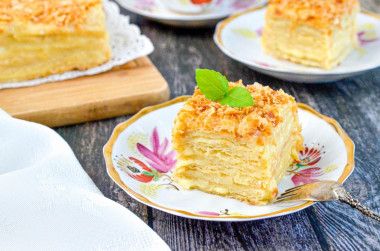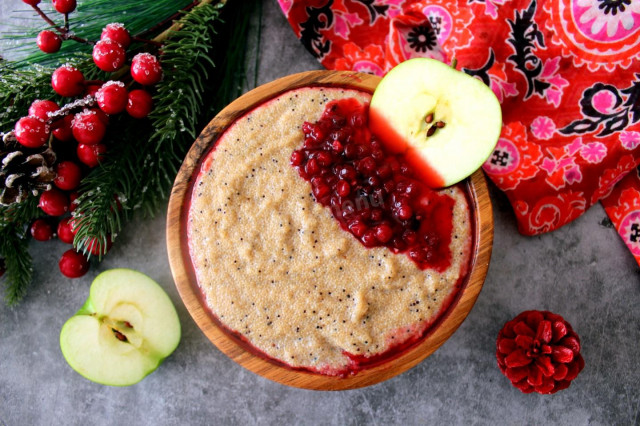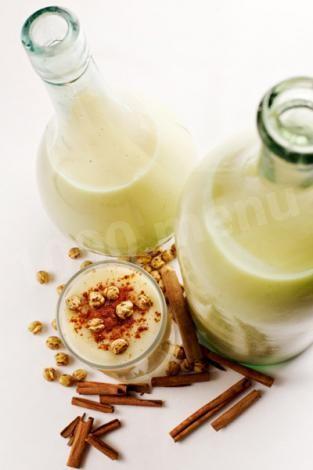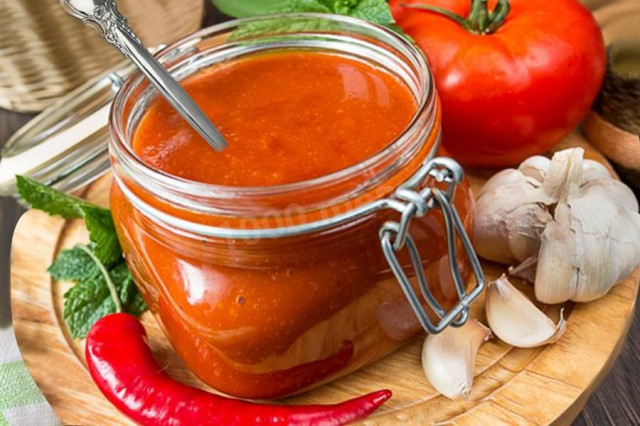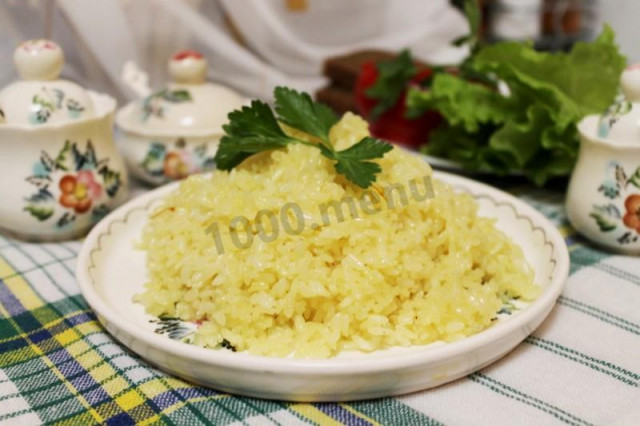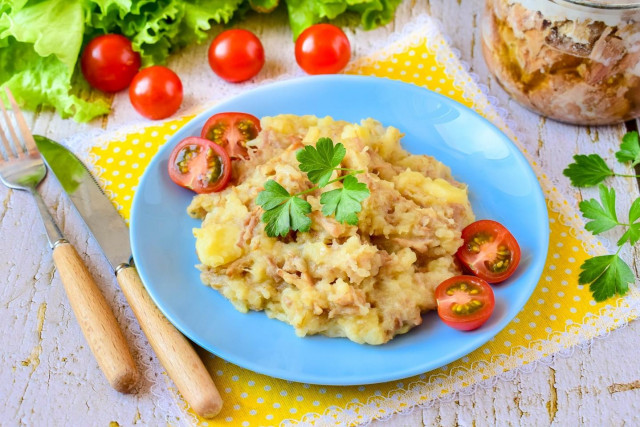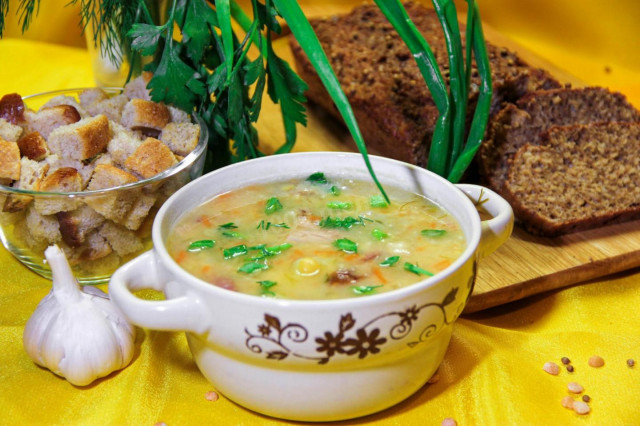Composition / ingredients
Step-by-step cooking
Step 1:
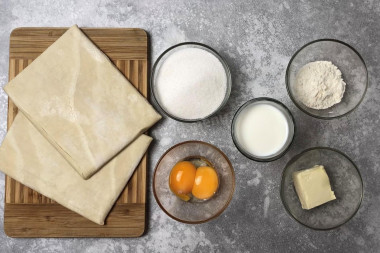
How to make a budget cake? Prepare the products. Take the dough is yeast-free, it does not rise so much and has a crisper structure, reminiscent of Napoleon cakes. The dough must be defrosted in advance. The best way to do this is to put the dough from the freezer into the refrigerator compartment. With this method, the dough will melt very delicately and will behave better when baking. This recipe is focused on a standard store-bought dough of two layers.
Step 2:
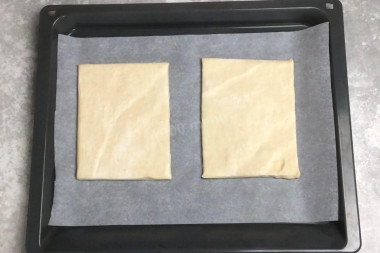
Cover the baking sheet with plain baking paper. Put both layers of dough on it, without rolling them out beforehand.
Step 3:
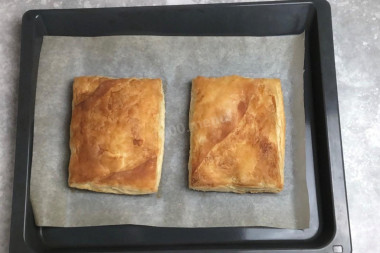
Bake the dough in an oven preheated to 220 ° C, top-bottom mode. Baking time is 15-20 minutes. Be guided also by the appearance of the dough — it will rise strongly and become ruddy. Cool the finished cakes.
Step 4:
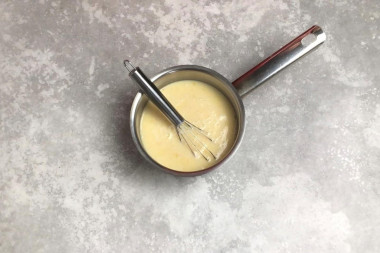
While the cakes are being baked and then cooled, prepare the cream. How to make a cream? Take a saucepan with a thick bottom. Pour sugar, flour into it, add egg yolks. With constant stirring, pour in the milk. Stir with a whisk until smooth.
Step 5:
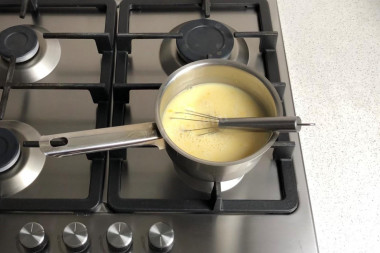
Put the saucepan on a small fire. With constant stirring, wait for the sugar to dissolve first, and then thicken the mass. Be sure to stir the mixture all the time, otherwise it will start to burn to the bottom. If you are not confident in your abilities or in your dishes, then do it in a water bath.
Step 6:
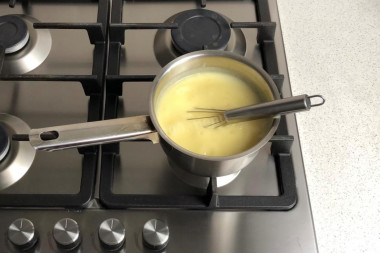
The mixture should boil — bubbles will begin to appear on the surface, and it will "puff". Turn off the fire immediately. The custard base for the cream is ready.
Step 7:
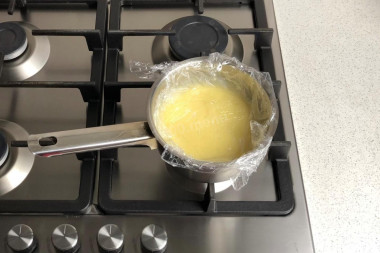
Cool the base. Be sure to cover it with food wrap, and put the film directly on the surface of the mass. Otherwise, a crust will form on top.
Step 8:
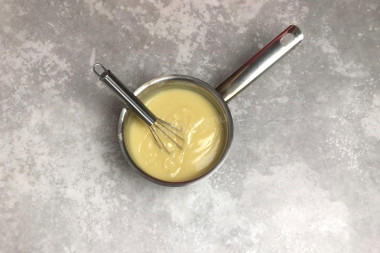
When the base cools down but is still warm, put butter in it. Since the cake is budget-friendly, there is very little butter in the cream, which does not affect its taste in any way. The only thing is, it does not need to be whipped like a regular custard. Simply mix the oil with the base. In a warm state, the oil intervenes very well.
Step 9:
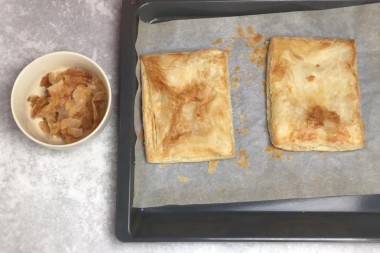
Remove the top part from the cakes, which will be the most fragile. Make a crumb out of it, which will decorate the cake on top.
Step 10:
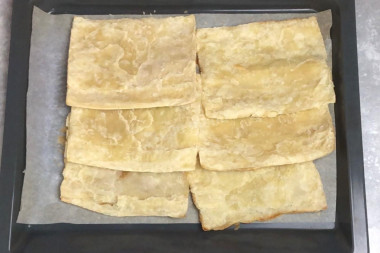
Divide the cakes themselves into layers into several parts. I got 6 pieces.
Step 11:
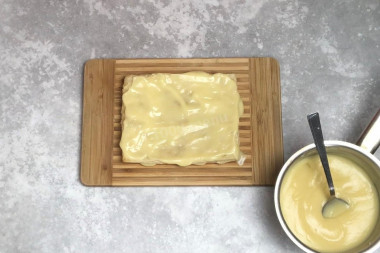
Assemble the cake. You can do it directly with warm cream — so it will soak the dough even better. Lubricate each cake with a few spoonfuls of cream. Spread the top and sides of the cake with cream as well. The cream turns out a lot, a small part even remained.
Step 12:
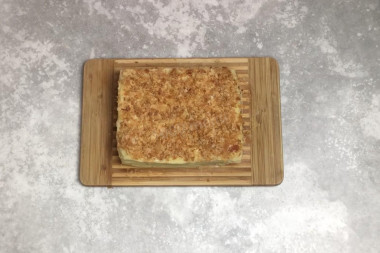
The crumbs that turned out from the top of the cakes, grind with your hands as small as possible. Sprinkle it over the top and, if enough, the sides of the cake. I only had enough for the top. Remove the cake for two hours in the refrigerator for impregnation. Serve the finished cake to the table with tea or coffee. Enjoy your meal!
Despite such a meager set of products, the cake turned out very tasty! The cream is wonderful — sweet, thick, not greasy. I recommend this recipe!
Be sure to wash the eggs before use, as even the seemingly clean shell may contain harmful bacteria. It is best to use food detergents and a brush.
In addition to the purchased one, you can also use your own dough. You can choose a recipe for homemade puff pastry for this baking in this catalog .
Keep in mind that everyone's ovens are different. The temperature and cooking time may differ from those specified in the recipe. To make any baked dish successful, use useful information about the features of ovens !
Caloric content of the products possible in the composition of the dish
- Whole cow's milk - 68 kcal/100g
- Milk 3.5% fat content - 64 kcal/100g
- Milk 3.2% fat content - 60 kcal/100g
- Milk 1.5% fat content - 47 kcal/100g
- Concentrated milk 7.5% fat content - 140 kcal/100g
- Milk 2.5% fat content - 54 kcal/100g
- Whole durum wheat flour fortified - 333 kcal/100g
- Whole durum wheat flour universal - 364 kcal/100g
- Flour krupchatka - 348 kcal/100g
- Flour - 325 kcal/100g
- Granulated sugar - 398 kcal/100g
- Sugar - 398 kcal/100g
- Puff pastry - 400 kcal/100g
- Puff pastry, unleavened - 337 kcal/100g
- Butter 82% - 734 kcal/100g
- Amateur unsalted butter - 709 kcal/100g
- Unsalted peasant butter - 661 kcal/100g
- Peasant salted butter - 652 kcal/100g
- Melted butter - 869 kcal/100g
- Egg yolks - 352 kcal/100g


